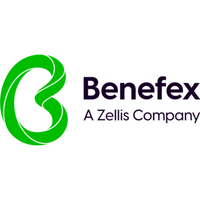Cut through the noise: How to ensure communications really reach your remote workers

In terms of communicating with home-working employees, we can look to a range of best practice examples. Communicating with our desk-based employees is a totally different ball game to communicating with those in the field – industries like hospitality, engineering and construction – who are (or soon will be) back to work sooner than most of us. Whether you’re encouraging use of cycle-to-work benefits, or promoting your global reward brand, there are some key things to bear in mind.
The best channels
First, you need to consider how you’re communicating. Already we were looking for the best ways to communicate with these more remote employees, but Covid-19has definitely sped that research process up, and we’ve definitely learned a lot from this time that will help improve that engagement with remote employees. Right now, we don’t have all the normal communication channels we might have when it’s ‘business as usual’. Employees aren’t walking past those digital screens, and they’re not picking up leaflets on the canteen tables. So, we need to make the channels we do still have work a little bit harder.
Naturally, those are digital channels. Email is the channel of the moment, but most of us will have found our inbox twice as full recently. Reaching employees through that noise is another challenge. You want to make sure the email communications you’re sharing are having the impact you want – and that means that less is more. Keep content to a minimum, keep your emails as short as possible, and direct your employees to further reading. When you can’t keep it short, it’s absolutely worth including a small summary at the top of the email as it makes employees more likely to read more than they usually would – whether that’s just the summary, or the full email!
Another tip is to not underestimate the importance of a good email subject line and highlight key points, keep your email high-level and include attachments if necessary. Also, your calls to action need to be clear and stand out - not hidden at the bottom of an email. If your employees have to scroll to even see the main call to action, you’re immediately decreasing the likelihood of people completing the action you want. Make sure your CTA is right at the top and one of the first things they read.
Personalisation is key
When it comes to who you’re communicating with, targetingand personalising is invaluable, especially in today’s circumstances. Sharing relevantcontent with employees is key. If you tailor your messaging your people are far more likely to read subsequent emails from you – so centre the key, relevant info. This may mean sending multiple versions of an email, but shifting the order of key points based on the different targets. For example, you could engage twice as many people, say, your established office-based workers and your new field-based workers, just by switching up the order of which benefits you put at the top of the email.
Make the most of the technology and data at your disposal, and make it work hard for you – if you have a tool you like, look at how you can make the most of that. Why not use the same tool for your internal comms and for HR teams to communicate non-benefits content with employees as well? Receiving branded, interesting and eye-catching comms is effective in keeping employees connected to the business.
Where is the message coming from?
Finally, think about what message you’re delivering, and who the best person to deliver that message would be. Consider where your information is coming from and who you are putting at the front of that message – who do you want to direct people to? Who is the authority on this? Who will people take the message from and engage with most?
One example is your line managers. They are on the frontline, looking after the wellbeing of their teams and keeping morale high. They’re also crucial for the business, because they’re a vital communication tool. Keep your managers up to date with benefits changes, extensions to holiday rules, changing legislation etc., and enable them to pass on that information. Now is a good time to consider how your line managers communicate, and whether you could upscale their communication skills. While communication is considered a ‘soft skill’, it is an invaluable aspect of management, especially now.
You can also consider your executive and senior management teams – these people represent a true voice of authority and stability in these uncertain times, so it’s important that they are able to communicate the right messages in the best way. It truly helps employees’ wellbeing to know ‘we’ve got this’. Opening up a dialogue between employees and that senior management team is also useful in building that trust, if you’re able to bring that in – whether that’s through anonymous surveys or digital drop-in sessions - now’s the time.
Final thoughts
Even after several months of home working, we are all still adjusting. Your employees need guidance and reassurance, but they also still need the same regular communications and updates on BAU subjects. Finding the balance between delivering enough and not swamping employees with comms is a fine line, but it can be hugely successful – and much simpler! – by focussing on the right channels, simplifying the messages, and tailoring for who you’re speaking to/from.
The author is Alexandra Houlden, head of communications, Benefex.
This article is provided by Benefex.
In partnership with Benefex
The home of award-winning employee benefits, reward, recognition, & communications.







